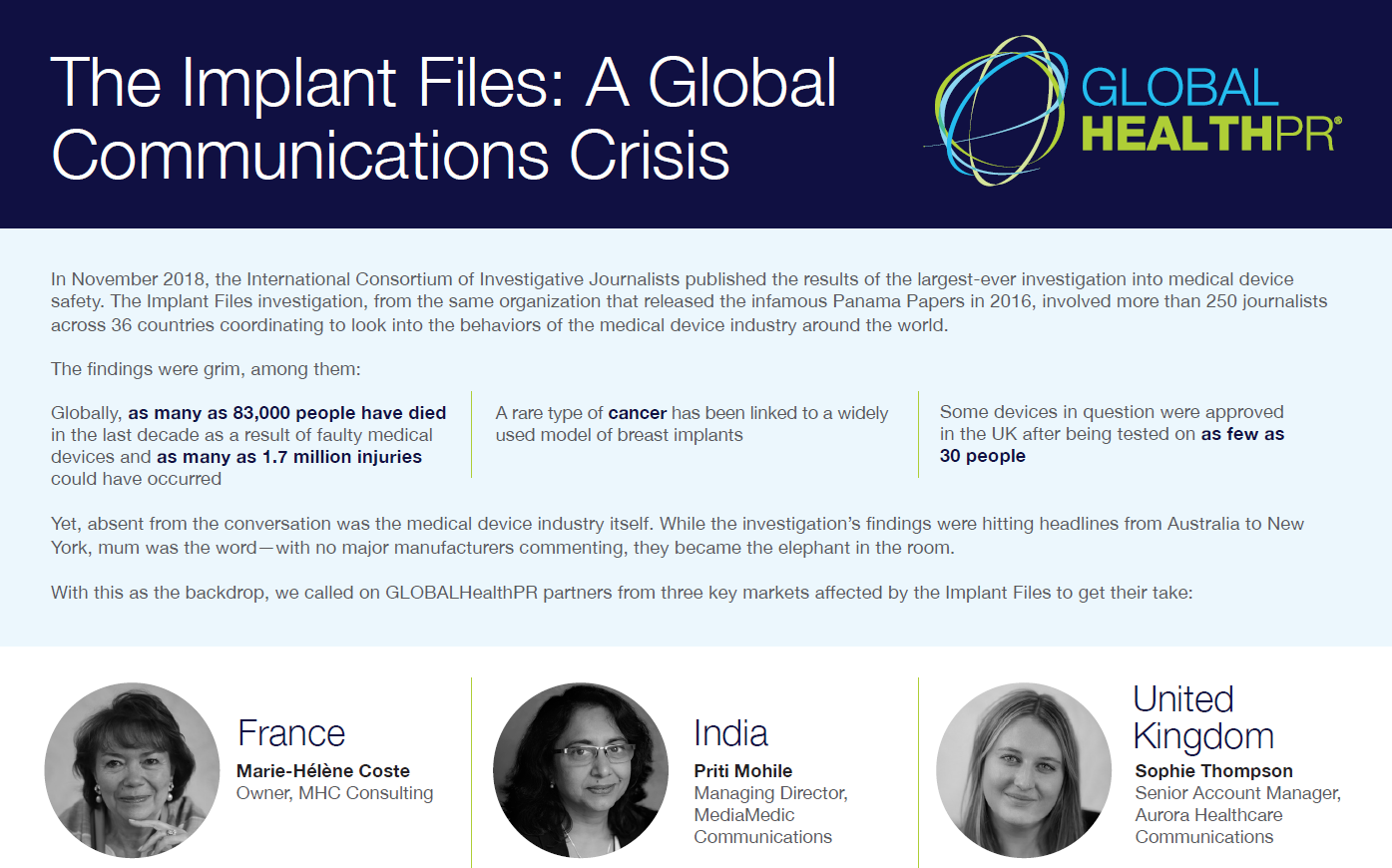We called on GLOBALHealthPR partners from three key markets affected by the Implant Files. For their take on the immediate and forward-looking impacts, download the strategy brief.

We called on GLOBALHealthPR partners from three key markets affected by the Implant Files. For their take on the immediate and forward-looking impacts, download the strategy brief.

What do running water, electricity, and medical innovation all have in common?
They are all things we’ve been conditioned in the United States to expect, and as such, all things that we often take for granted.
It’s not news that the pharmaceutical industry has a messaging problem. At the ExL Pharma conference last week, a presenter shared survey results indicating that when asked about the industry’s last major medical breakthrough, many people cited the development of the polio vaccine. In case you don’t remember, the polio vaccine was developed more than 60 years ago!
The message is clear: people don’t recognize all the life-changing innovation that takes place in the pharmaceutical industry every day.
 In my lifetime I have seen HIV/AIDS go from an incurable death sentence to a chronic, manageable condition. New biologic treatments like monoclonal antibodies and immunotherapies have had a massive impact on the way we treat everything from psoriasis to cancer. Companion diagnostics have helped us identify genetic mutations that predict responses to care across a range of oncologic conditions leading to better outcomes and reduced costs. Statins and anti-hypertensives have helped to significantly reduce the risk of cardiovascular events, contributing to increased life expectancies. Drugs like Sovaldi can cure Hepatitis C. Not treat, not manage – cure.
In my lifetime I have seen HIV/AIDS go from an incurable death sentence to a chronic, manageable condition. New biologic treatments like monoclonal antibodies and immunotherapies have had a massive impact on the way we treat everything from psoriasis to cancer. Companion diagnostics have helped us identify genetic mutations that predict responses to care across a range of oncologic conditions leading to better outcomes and reduced costs. Statins and anti-hypertensives have helped to significantly reduce the risk of cardiovascular events, contributing to increased life expectancies. Drugs like Sovaldi can cure Hepatitis C. Not treat, not manage – cure.
For better or worse, we have come to expect miracle treatments. The pharmaceutical industry has been so good at developing drugs for so long, that it is no longer surprising when incredible new medicines come to market. Instead of celebrating innovation we expect it. Rather than rejoicing at revolutionary new treatments we bemoan the prices and villainize those whose work led to these breakthroughs.
This brings us back to the messaging problem. How do we get the public to recognize and appreciate the innovative treatments the pharmaceutical industry develops?
People understand and appreciate in the abstract the benefits of electricity and running water and I think they probably understand the benefits and value of new drugs. But for many, the conversations around pharmaceutical products remain abstract. That’s a problem.
We need to stop speaking solely in numbers and dollars and start shaping conversations that are personal. We need to demonstrate just how much we all depend on the advancements that have been made, and the ones that will be introduced in the years to come. We need to focus on the people, not the “patients,” whose lives are forever changed by the therapies our industry introduces and we need to celebrate the scientists who dedicate their lives to pushing the boundaries of medicine to save, extend and improve the lives of others.
Connecting those dots, taking it from the abstract to the personal, humanizing the innovation that’s changing lives each and every day, is how we’ll start getting people to think about medical innovation in the here and now and to appreciate the value that innovation brings.
I’d love to hear your thoughts on major medical advancements that have moved you in the past 60 years – do you think the pharmaceutical industry has had major breakthroughs since the polio vaccine? I do!